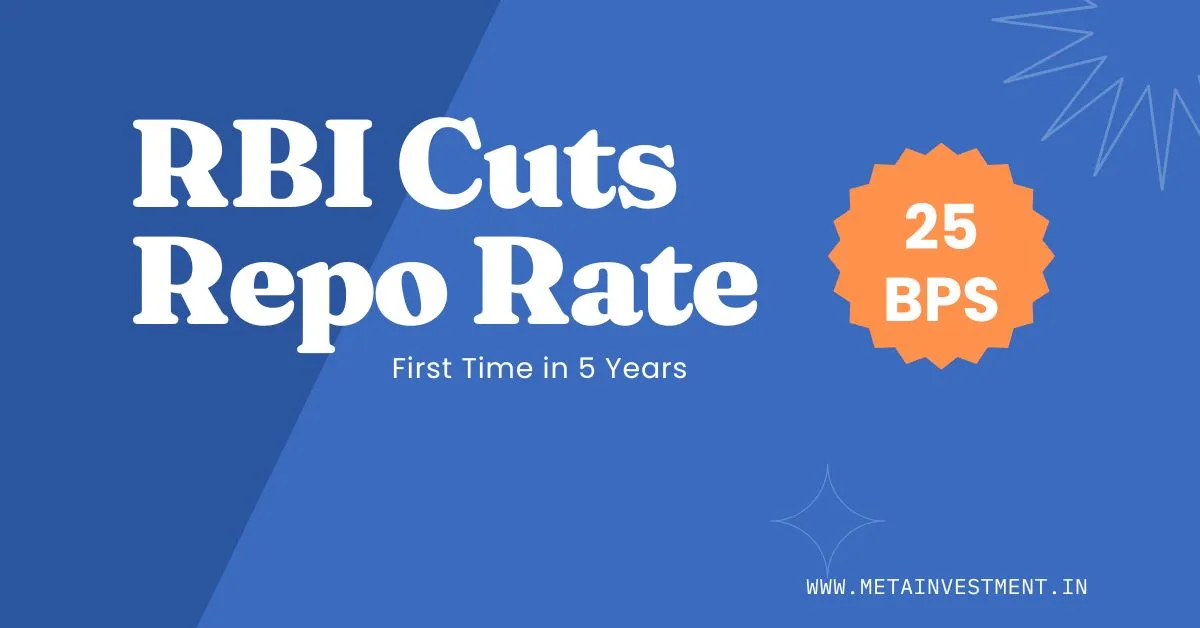The Reserve Bank of India (RBI) has made a significant move by cutting the repo rate by 25 basis points (bps) to 6.25%, marking the first reduction in five years. For investors, especially those in the fixed-income space, this presents a unique opportunity to reassess their portfolios and capitalize on the changing interest rate environment.

The Monetary Policy Committee (MPC) deciding on interest rates also agreed to keep their current approach (neutral stance) and continue to focus clearly on keeping inflation in line with the target, while also trying to help the economy grow.
What Does the Repo Rate Cut Mean?
The repo rate is the rate at which the RBI lends to commercial banks. A reduction in this rate means banks can borrow funds at a lower cost, which typically translates to lower interest rates on loans for consumers and businesses. Over time, this move is expected to stimulate economic activity by making credit more affordable.
Implications for Investors
1. Lower Loan Interest Rates
With the repo rate cut, banks are likely to reduce their prime lending rates, leading to lower EMIs on home loans, auto loans, and business loans. This is excellent news for borrowers, as it reduces the cost of debt and improves disposable income. For investors, this could mean more liquidity to allocate toward investments.
2. Falling Deposit Rates
While borrowers benefit, savers may face a downside. As lending rates decline, banks are also expected to lower interest rates on fixed deposits (FDs) and other savings instruments. If you’ve been relying on traditional FDs for steady returns, it’s time to rethink your strategy. The era of high FD rates may be coming to an end, at least for the foreseeable future.
3. A Golden Opportunity for Fixed-Income Investors
The RBI’s rate cut is a clear signal that interest rates are likely to trend downward in the coming months. For fixed-income investors, this is a critical window to lock in higher yields before rates decline further. Here’s how you can make the most of this opportunity:
-
Invest in Long-Term Debt Instruments: Consider locking in higher interest rates by investing in long-term fixed-income products such as bonds, non-convertible debentures (NCDs), or fixed maturity plans (FMPs). These instruments can provide attractive returns over a longer horizon, especially when rates are expected to fall.
-
Explore High-Yield Corporate Bonds: With interest rates on government securities likely to decline, high-rated corporate bonds can offer better yields. Ensure you assess the credit risk before investing.
-
Revisit Your Debt Mutual Funds: If you’re invested in debt mutual funds, this is a good time to evaluate your portfolio. Funds with longer durations may benefit from falling interest rates, as bond prices tend to rise when yields fall.
What Should You Do Next?
The RBI’s rate cut is a reminder that the interest rate cycle is turning. For fixed-income investors, the key is to act swiftly and strategically. Here are a few steps to consider:
-
Lock in High Rates: If you’ve been considering fixed-income investments, now is the time to act. Secure higher yields before rates drop further.
-
Diversify Your Portfolio: Don’t put all your eggs in one basket. Explore a mix of debt instruments, including bonds, FDs, and debt mutual funds, to balance risk and returns.
-
Consult a Wealth Manager: The current environment presents both opportunities and challenges. A wealth manager can help you navigate the complexities and tailor a strategy that aligns with your financial goals.
Check Current Fixed-Income Investment Opportunities.
Conclusion
The RBI’s decision to cut the repo rate is a significant development with far-reaching implications for investors. While borrowers stand to benefit from lower loan rates, fixed-income investors must act decisively to secure higher yields before rates decline further. By locking in attractive returns now and diversifying your portfolio, you can make the most of this pivotal moment in the interest rate cycle.
Stay informed, stay proactive, and seize the opportunity to strengthen your financial future.
Disclaimer: This blog post is for informational purposes only and should not be construed as financial advice. Please consult a certified wealth manager or financial advisor before making any investment decisions.













